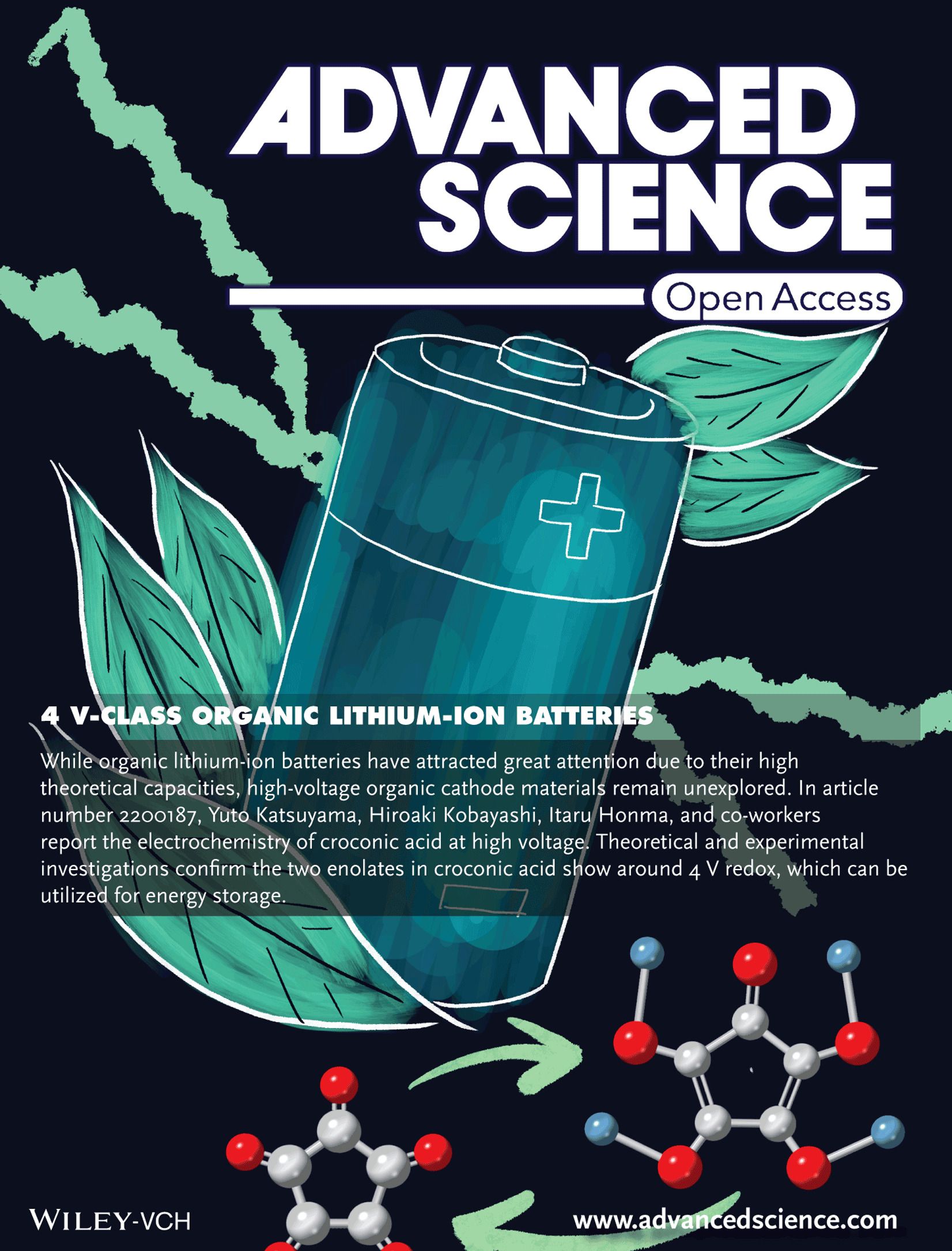High-Voltage High-Energy-Density Li-ion Battery Reported To Be Cheap And Metal-free
| Jerry Huang

Editor’s note: Researchers report a breakthrough high-voltage high-energy-density electrochemistry of Lithium-ion Battery that is economical and metal-free (environment-friendly). This 4 V-class organic lithium-ion battery features high theoretical capacity and high voltage, while their practical cathode materials and electrolytes remain unexplored.
Are Redox-Active Organic Small Molecules Applicable for High-Voltage (>4 V) Lithium-Ion Battery Cathodes?
By: Yuto Katsuyama, Hiroaki Kobayashi, Kazuyuki Iwase, Yoshiyuki Gambe, Itaru Honma | First published: 10 March 2022 on Advanced Science
4 V-Class Organic Lithium-Ion Batteries
While organic lithium-ion batteries have attracted great attention due to their high theoretical capacities, high-voltage organic cathode materials remain unexplored. In article number 2200187, Yuto Katsuyama, Hiroaki Kobayashi, Itaru Honma, and co-workers report the electrochemistry of croconic acid at high voltage. Theoretical and experimental investigations confirm the two enolates in croconic acid show around 4 V redox, which can be utilized for energy storage.
Abstract
While organic batteries have attracted great attention due to their high theoretical capacities, high-voltage organic active materials (> 4 V vs Li/Li+) remain unexplored. Here, density functional theory calculations are combined with cyclic voltammetry measurements to investigate the electrochemistry of croconic acid (CA) for use as a lithium-ion battery cathode material in both dimethyl sulfoxide and γ-butyrolactone (GBL) electrolytes. DFT calculations demonstrate that CA dilitium salt (CA–Li2) has two enolate groups that undergo redox reactions above 4.0 V and a material-level theoretical energy density of 1949 Wh kg–1 for storing four lithium ions in GBL—exceeding the value of both conventional inorganic and known organic cathode materials. Cyclic-voltammetry measurements reveal a highly reversible redox reaction by the enolate group at ≈4 V in both electrolytes. Battery-performance tests of CA as lithium-ion battery cathode in GBL show two discharge voltage plateaus at 3.9 and 3.1 V, and a discharge capacity of 102.2 mAh g–1 with no capacity loss after five cycles. With the higher discharge voltages compared to the known, state-of-the-art organic small molecules, CA promises to be a prime cathode-material candidate for future high-energy-density lithium-ion organic batteries.
References:
- https://doi.org/10.1002/advs.202200187